I'm trying to understand the schematic of the Apple 1 computer power supply.
Nothing surprising at first sight. Two power transformers (117 VAC -> 10 VAC / 117 VAC -> 28 VAC), two diode bridges, and four voltage regulators (+5V / -5V / +12V / -12V).
But looking closely, I can't understand the logic here.
While the +5 volts output uses the first power transformer, through rectification and regulation, the -5 volts output uses the regulated -12 volts output.
So basically, why is that? Why doesn't it use the rectified output of the 10 VAC transformer, as does the -12 volts output with the second transformer?
Or maybe why is there two power transformers? If the -5 volts uses the regulated -12 volts, why can't the +5 volts use the regulated +12 volts?
And if I may ask another question here, what about the capacitor values? Looking at the datasheets for the voltage regulators, capacitor values look really huge.
For instance, typical application schematic of the LM323 uses 1uf and 0.1uf capacitors. So what's the benefit of using such high capacitance in the Apple 1 power supply?
